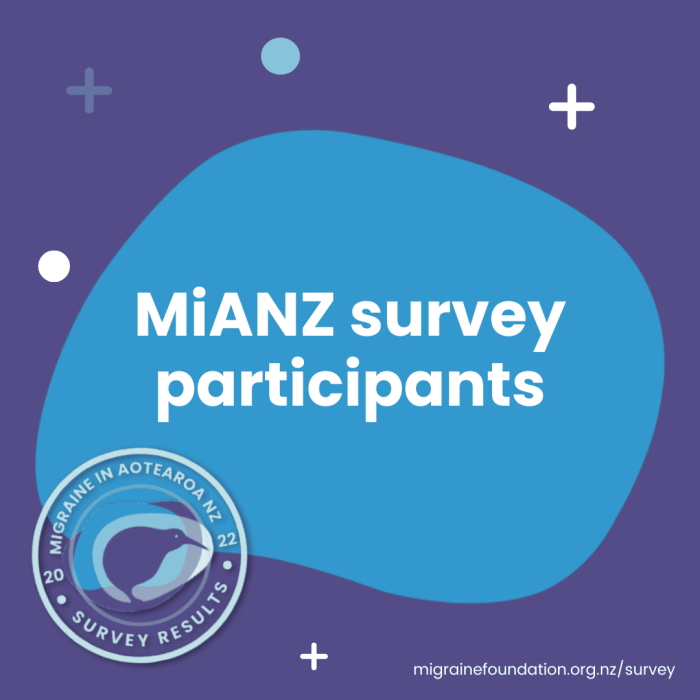Description of the respondents to the 2022 Migraine in Aotearoa New Zealand Survey
Key points
- The 2022 MiANZ survey is the first online survey to collect information about the impact of migraine on people in Aotearoa New Zealand, including disability from migraine, treatments used, impact on work, access and experience of health services and experiences of stigma.
- Responses were collected from 530 individuals with identified migraine disease.
- The survey was not nationally representative of all people with migraine in Aotearoa New Zealand, and under-represented males, Māori and Pacific people.
Migraine identification and experience
The Migraine in Aotearoa New Zealand Survey (MiANZS) was an online survey run by the Migraine Foundation Aotearoa New Zealand in August-October 2022. We had 530 people respond to the survey (see Methodology report for more information about the survey).
All 530 respondents had either a positive score on the ID-Migraine testᵀᴹ and/or a migraine diagnosis from a health professional. The ID-Migraine testᵀᴹ is a set of three questions which helps to identify people with migraine disease. A positive test is when people answer ‘Yes’ to at least two of the three questions.¹ These questions are:
- Has a headache limited your activities for a day or more in the last three months? Activities refer to work, study, play or other things you need to do in the day.
- Are you nauseated or sick to your stomach when you have a headache?
- Does light bother you when you have a headache?
Of the 530 respondents, 95% reported that headache had limited activities in the last three months, 80% experienced nausea with their headache and 91% reported photophobia (sensitivity to light with a headache).
Demographics
Migraine disease disproportionately affects people in peak working-age years. Nearly three-quarters (74%) of MiANZS respondents were aged 25–54 years. Migraine also affects women 2–3 times more frequently than men. Only 9% of survey respondents were male, while 90% were female and the remainder identified as another gender.

Most of the survey respondents were NZ European/Other ethnicity (86%), while 8% were Māori and only 1% were Pacific. From the 2013/14 New Zealand Health Survey, Māori and Pacific people have a similar prevalence of doctor-diagnosed migraine as the whole population (around 16%).


